From Zihuatanejo we continued down the coast and in a day made it to the outskirts of Acapulco. While still the coastal route, it is almost exclusively far enough off the coast so that the sea wasn’t visible but as a blue border on the Garmin GPS display.
If eventful at all it was for what seemed to be hundreds of ‘topes.’ Now topes are bumps in the road deliberately placed to slow traffic to a virtual stop. Santa Fe, New Mexico went nuts for ‘speed humps’ a few years ago and while they are irritating, they are gentle and the recommendation on the signs is not to proceed over them faster than 20 mph. Topes, however, are a brutally more deadly version, usually only a foot or less across, at least six inches high and extending all the way across the road, but designed to bust not just tires but the steel wheels they are on or engine oil pans (we can testify on that one) or some major suspension component if taken faster than say about 2 mph. Most are just humps in the asphalt, but some are steel hemispheres placed across the road close together, or rubber strips about 8 inches high, or even old six inch manila mooring lines just stretched across the road at army or navy check points. Some are marked with signs and painted with yellow strips so you can’t miss them; some are hard to see in the shadows if not painted; some I swear are deliberately hidden where one would never expect them so that nothing but a panic stop prevents some form of vehicle destruction. And apparently anyone with a wit worth of ingenuity and supplies can put one across the road. We were through villages where there were more topes than people and sometimes encountered one in the middle of nowhere with only goats or burros to witness Dan the Van hopping in the air.
The stretch of road between Zihuatanejo and Acapulco was bad; the road from Acapulco to Puerto Escondido is famous for them. The consensus seems to be that there are about two hundred of them on that highway. One fellow traveler claimed to have counted 187; another claimed 236 but he was riding a bus and they sometimes detour into villages to pick up passengers. Either way, it is tope heaven or hell. I did the math based on 200: one tope every 1.2 miles over 240 miles. While topes are everywhere in Mexico, this is truly the heartland!
Let us tell you a bit about Acapulco. We were a bit hesitant about it since it has been the location of some pretty horrible drug cartel violence, but encouraged by others we decided to give it a couple of days. We stayed on the northern fringe of the city in an area called Pie de le Cuesta, a narrow stretch of sand between a lagoon on one side, rather funky hotels and nice restaurants on the strip of sand, and a beach to kill for on the other side. The campground was shaded, well tended, and with a really wonderful group of Germans and Canadians, most of them Quebecois, and most in residence for the winter season.
They gathered for coffee in the morning, for boules at 4PM each day, and for a drink afterwards, and could not have been friendlier to these American visitors. It was here that we also met Kevin and Ruth, from Ottawa and tent camping and who were our companions for the next few days overnight in Playa Ventura and later in Puerto Escondido.
Acapulco itself was a real surprise, and a number of things stand out, beginning with the heat. It was hot and it was humid. We got a ride into town with a German in his fancy pickup truck who kept repeating that there were no speed limits in Germany and that the same could easily apply in Mexico as he attempted to prove his thesis. He dropped us close to the zocalo or most central plaza and we had a coffee and a look inside the rather un-Mexican and somewhat Byzantine cathedral adjacent, then headed up the hill to witness Acapulco’s most famous tourist attraction, the divers from the cliff top, La Quebrada Clavadistas. I don’t know what to tell you except that they are absolutely spectacular. I grew up diving off rocks from 12 or 15 feet into narrow channels. These guys dive from up to 113 feet down a cliffside into a narrow slit of water, timing their dives to coincide with individual waves coming in because the water depth is almost nothing. And the best of them do a flawless summersaults as they descend! Way spectacular!
We also walked down the waterfront to the Fuente de San Diego, the 1783 fortress overlooking the entire bay and built to offer protection from pirates to those Spanish galleons coming from the Philippines and loaded with oriental treasure. This was a trade route that furnished Spain with riches for centuries. Galleons were loaded with oriental goods, chiefly Chinese, in Manila and brought to Acapulco, where the treasure was transported overland over heavy guard to Veracruz, and from there shipped on to Spain. It now houses the Museo Historico de Acapulco which details this fascinating history and includes examples of the porcelain, silk and furniture brought across the Pacific to Acapulco.
We decided to take a bus back to the campground and finally found one wildly painted, and certainly with a couple of decades of experience visible already, but with the name of our area painted onto its windshield. So we boarded and started out, but after about 40 minutes we had moved about half a mile and that entirely in the wrong direction in the heat. When we crept into a narrow street next to the Central Market we decided that the best course was to bail and grab a cab. Here’s a look at the interior of the bus with its pink dashboard, extravagant decor, and giant frog centerpiece. What you can’t see is its blaring Mexican rock music so loud we had our fingers in our ears.
But for the topes, the road from Acapulco to Puerto Escondido was uneventful. Sections of the countryside enveloped us in a green blur, a steamy haze of avocado, papaya, banana, mango and giant coconut palms set against the blue of the sea and sky. We spent a night in a small village along the shore called Playa Ventura where we stayed with our friends Kevin and Ruth in a family’s yard beside the sea. This is an area where there is a heavy African influence and most of the residents are of obvious African background. The story is that they are descendants of escaped slaves from the Caribbean side of Mexico, or of a slave ship which supposedly went aground in this area sometime in the 1800s. There were six daughters of the couple whose yard we camped in, two chickens and a rooster and twenty downy chicks, three dogs and a cat with whom one of the dogs played like a puppy. Here’s a shot of Kevin doing his daily blog as Ruth hovers behind him, ready to edit:
And here’s the link to his blog. You might want to check it out– http://www.travelwithkevinandruth.com
The trip on to Puerto Escondido was as anticipated but for Kevin and Ruth catching up to us as we had lunch under a tree in a town full of what we would call ‘tuk-tuks’ from our Southeast Asian experience. They were everywhere and we haven’t seen them since, which leads us to think that a boatload of Vietnamese somehow ended up here with their mode of transportation intact!
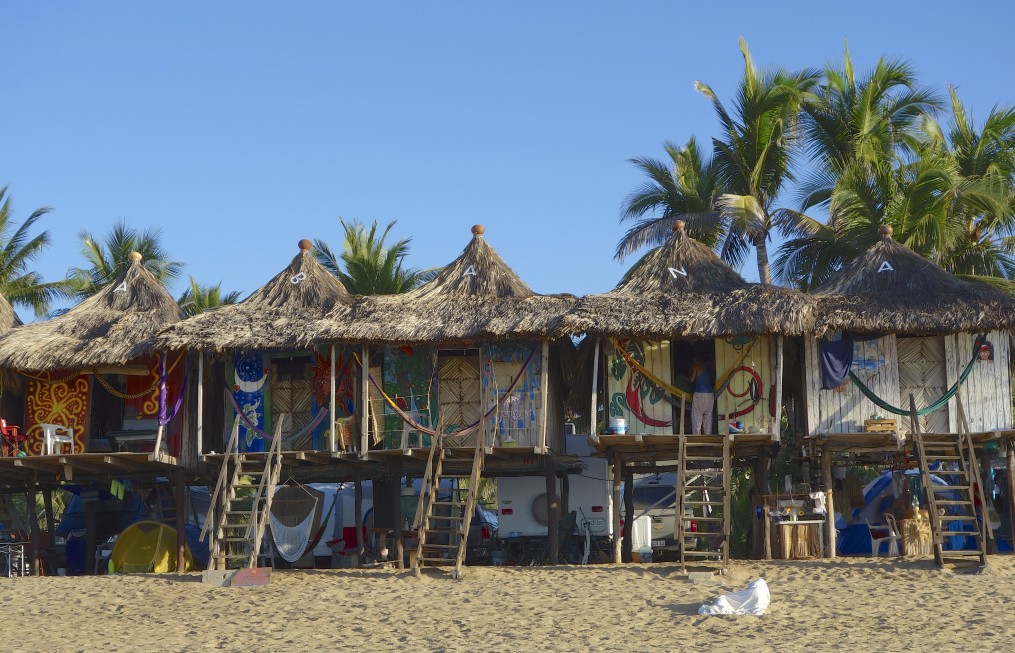
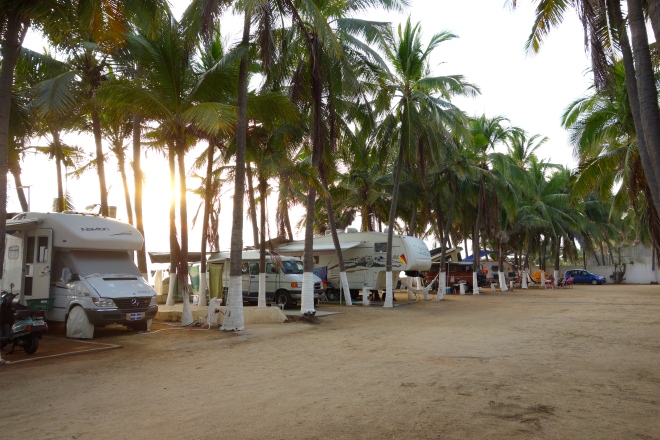
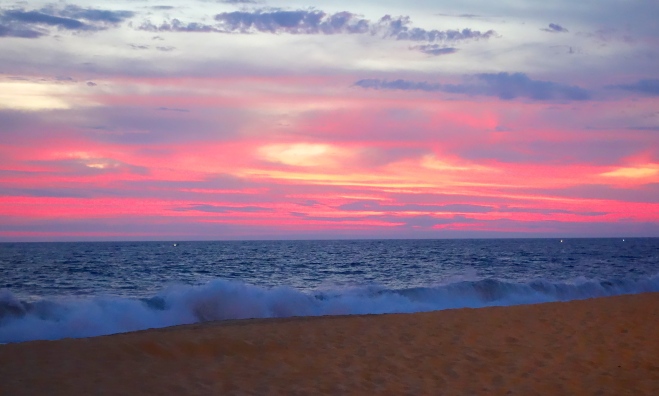
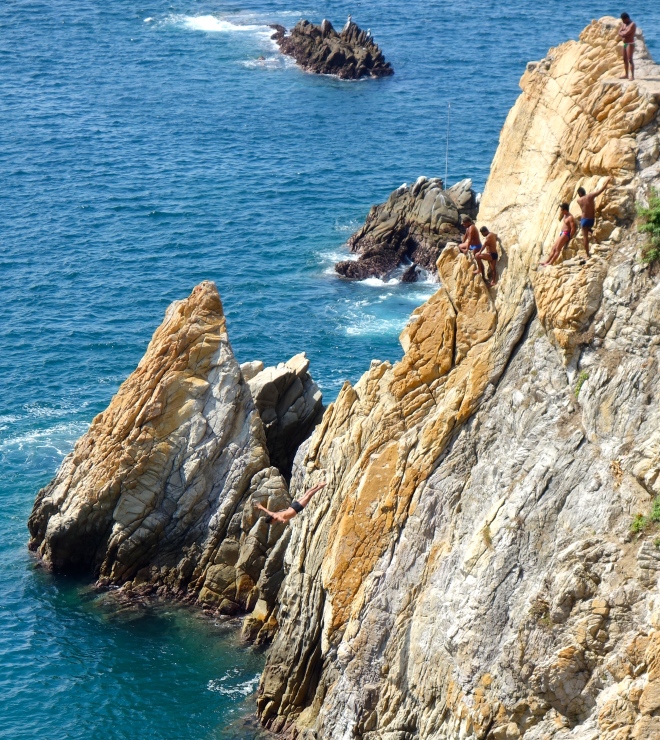
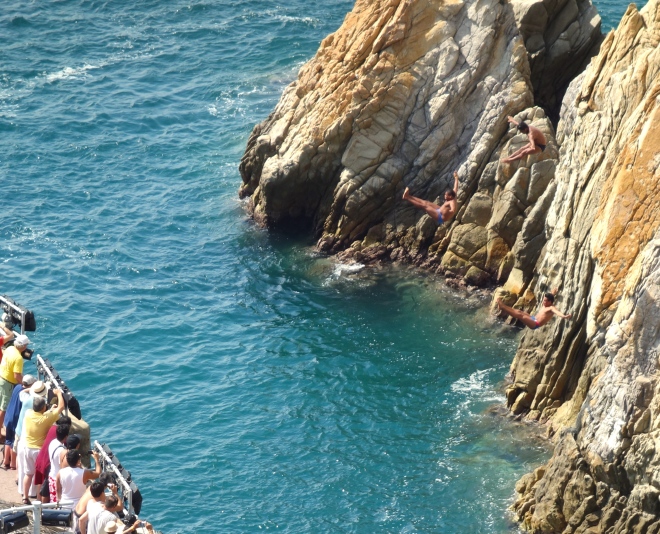
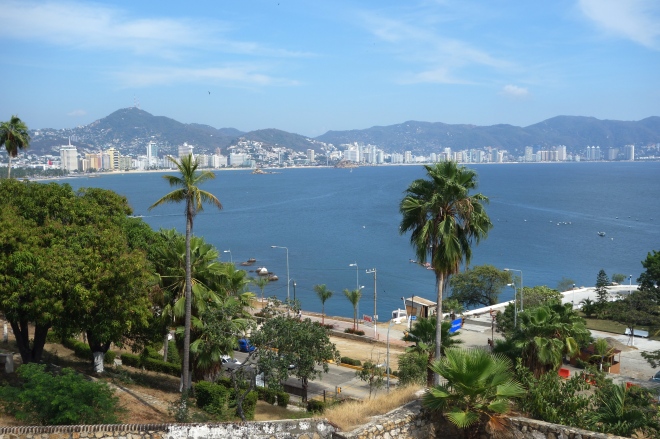
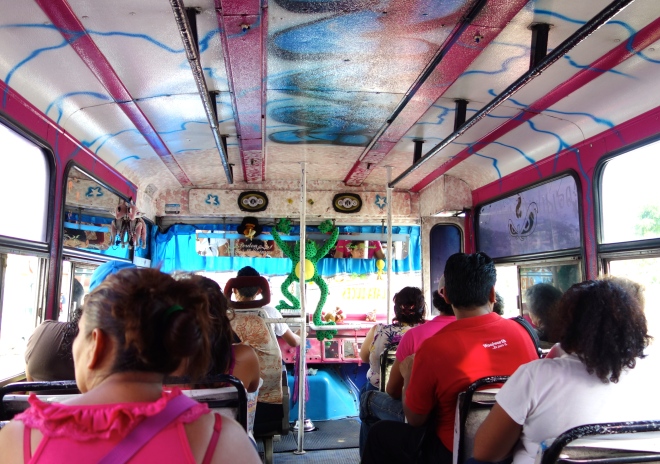
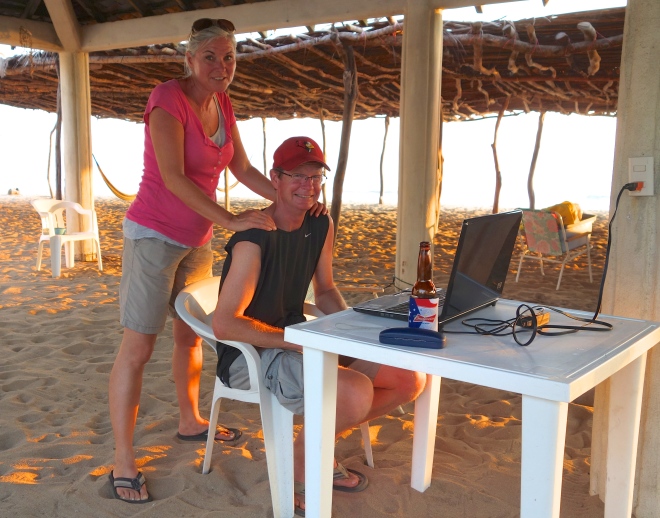
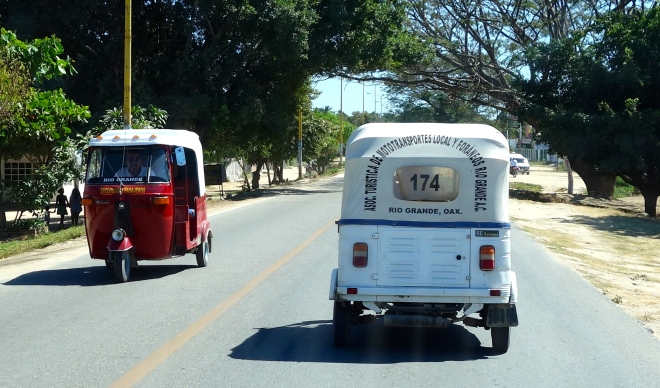
Hey Bon and Dave, your blog is great, love following you down thru Mejico. Bon- your stories are so well told and interesting, and your photos are great. Our talks about night shooting, which has it’s own problems, says nothing about your great composition and color in the daytime photos. Really wonderful photos!! They tell the story which is the point……….xo M
Hey Marion, Thanks for the good comments. It’s been hard to do on the road like this, constantly moving and with poor internet access, and we’re never sure if anyone is really interested or reading it but for a few of David’s old friends from college! David is actually the author of the blog and I take the photos. It would be too much if I tried to do both and he seems to like the writing part. We’re still weeks behind in our updates but hope to catch up in the next few days. Hope all is well with you and Tom. Love, Bonnie